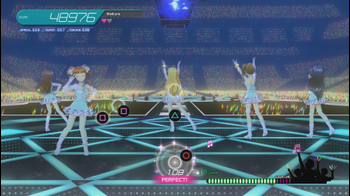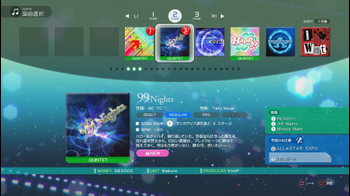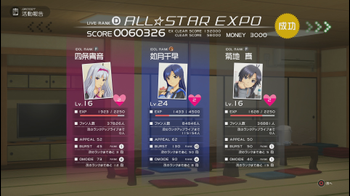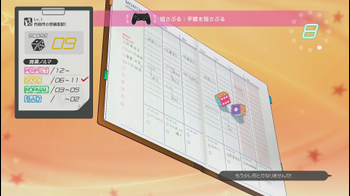
Branching Path: Project Inter-Media @rtists & Specialists
We all have favorite characters in games, movies, novels, and all other types of media. There is something about those particular set of characters we find appealing and attractive. It could be their design, their personality, and/or their struggles, along with a plethora of other factors. RPGs, for example, lend themselves to loyal followings for their characters because players spend so much time watching their cherished individuals develop over the course of the game.
Therefore, it is no surprise the gradual rise of the idol phenomenon in Japan has spread worldwide. Built upon the foundations of spreading hopes and dreams on a superficial level, young male and female groups are formed to appeal to the masses. Of course, this opens up the path to massive merchandising opportunities on the business side of things and leads us to this very article.
Welcome to this third edition of the Branching Path, articles that stray from RPGs into other key interests from our writers. This time, it will be a journey that takes a closer look behind the idol sim genre with the newest Idolm@ster game on PlayStation 4, The Idolm@ster: Platinum Stars.
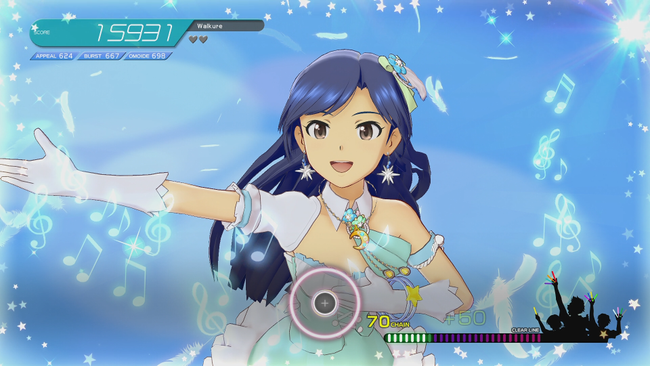
There is something to be said about the outstanding influence of The Idolm@ster series in Japan; it is largely considered to be the forefather of idol pop-culture to the modern mainstream audience over there. Compile Heart’s Omega Quintet and Hyperdimension Neptunia: Producing Perfection were definitely shaped, to some extent, by the ideas found in Idolm@ster.
Before I begin, I will admit I am no complete stranger to the idol phenomenon. There have been numerous anime shows that have sprung forth as a result of the craze and I was dragged into watching some of them, including The Idolm@ster’s adaptation; Love Live!; Wake Up, Girls!; and Locodol.
I had a vague idea what I was getting into, but I have never actually played a “proper” idol game. I thought it would be a good idea to experience it myself, and thus, I sat down and played several hours of The Idolm@ster: Platinum Stars.
Upon starting the game’s Producer Mode (its “campaign” mode), I was plunged into the role of a new Producer on his or her first day on the job. When naming your character, it’ll add a P at the end of it – a common practice in the idol culture to signify a person’s status as a Producer. Therefore, my dumbfounded, faceless character came to be known as KirinP.
Presented similarly to a visual novel with a static background and dialogue boxes, the standard introductions to the small management crew were in order. I met my silhouetted outline of a boss, Chief Takagi, and my cute green-haired assistant, Kotori Otonashi. They provide basic explanations for the game’s main objective – to successfully produce one of the thirteen idols to be a star. I find that “produce” is an odd term to put it; perhaps it is more akin to directing one of them towards a secure career in the music industry.
Nevertheless, I found myself staring at a character select screen with the idols of this fictional 765 Production talent agency that I, KirinP, now work for. This weird “765 Production” name spawns from taking parts of the Japanese pronunciation of those individual numbers to form “Namuko” – a clever Japanese pun for the developers over at Namco.
My choice wasn't too difficult. I already had a favorite idol from these set of girls – the long blue-haired Chihaya Kisaragi. Her voice actress, Asami Imai, has performed many roles from other favorite characters of mine, including Kurisu Makise from Steins;Gate and Noire from the Hyperdimension Neptunia series.
Once again, introductions are in order though this is the first time an actual character model appears on-screen. Bandai Namco is no slouch when it comes to stylizing and animating the main stars of these games. It is quite impressive to see the nuances of their 3DCG technology at the forefront thanks to the additional horsepower of the PlayStation 4. From details in the clothing reacting properly to directional movement to how body language is conveyed from minute movements during stances, the little touches add up to communicate a message beyond words.
KirinP soon comes to learn that, just like her anime counterpart, Chihaya is a reserved girl who is serious about her growth as a musical artist. She is not easily flustered, but she tends to be down on herself when she feels that she has hit a wall. Plus, her narrow-minded tendency often isolates her from being socially proactive with the other girls.
After choosing a song from a small list of tracks, Chihaya takes to the stage to perform a song. At its core, Platinum Stars is a rhythm game when it comes to active gameplay. Button prompts fly towards a fixed zone at the bottom of the screen with timed presses that dictate a Bad, Normal, Good, or Perfect input – a more precise press rewards more points. Some notes required a button to be held down and other times the touchpad is needed for special icons.
Apparently this is the first mainline Idolm@ster game to incorporate an involved gameplay mechanic. From what I hear, the mainline series’ previous entries, The Idolm@ster 2 and The Idolm@ster: One for All, were more of a score attack game that rewarded buttons to be mashed to the tempo of the song. I cannot speak for them much, but it does sound a bit bizarre.
The main goal behind Platinum Stars’s rhythm is performing well enough to get to pass the Clear Line on a gauge. Fully filling out this gauge earned me an Ex-Clear which rewarded me an additional item at a later point. Crossing the Clear Line also riles the audience up to request an encore performance allowing the option to view the performance once more without the button prompts grabbing my full attention.
Shortly after Chihaya’s debut, I chose two more ladies, Takane Shijou and Makoto Kikuchi, to form my initial trio of performers. KirinP’s road to foster stardom begins here!
I found it jarring that while the models were impressive, they struggled dealing with longer hair. Takane, for instance, had her hair constantly clip through her fingers. Miki’s lengthy blonde hair would flat-out phase through her arm and shoulder like they did not even exist. Usually I am lax about slight technical difficulties, but it honestly bothered me, though it equally amused me as well.
Time to start acting like a Producer though! There is a lot of things to consider when being one supposedly – raising funds, finding ways to get Chihaya more fans, acquiring different outfits and accessories to raise… stats?
There are a fair number of RPG elements in The Idolm@ster: Platinum Stars. Each idol has a level progression that raises her three primary stats: Appeal, Burst, and Omoide (memories). I am not 100% sure what the specifics are behind each stat, but I believe Appeal refers to overall points gained per note. Burst affects the Extreme Burst mechanic that largely boosts point acquisition temporarily, and Omoide affects the special X prompt that awards a large amount of points plus a brief beauty shot of one of the performers.
I assume additional Omoide prompts are added once the heart level of your main idol levels up. Raising this just involves doing well in stage shows, having favorable interactions with her, and obtaining good results on the management mini-games.
Yes, part of being a competent Producer is having the ability to financially back your idol consistently. I had no idea what this would entail, but Platinum Stars’ way to obtain money, in many cases, is to roll some dice.
What?
In this sad excuse of a mini-game, you initially start with a single die to drop on a clipboard. The higher the number by the end of the timer, the more money you will get. Manipulating the clipboard to control this dice involves the DualShock 4’s gyroscope which is absurdly sensitive to the point that I just fling the dice off and hope it lands on a higher number when it respawns.
As far as I know, this was the only way to feasibly grind for cash since the payouts on performances were relatively not all great. There is also another way to gain money… if you are willing to shell out real money.
The Idolm@ster games are somewhat infamous for their DLC structures. In order to even use DLC, I had to download a catalog that installs the data of those items into my system – all the player needs from then on is the keys to access them. At the time of this writing, the first DLC catalog has three songs, special accessories tied to a song, character emails to receive texts from them, and of course, virtual currency.
It is pricey. It is expensive. It… definitely has some worth because DLC songs are exclusive to being DLC; they are not early unlocks that already exist in the base game. The same is also true for DLC accessories. Bandai Namco has done this for years; they know what players want, and players are more than happy to shell out for better or worse.
Accessories and outfits do play a significant role into the gameplay mechanics of Platinum Stars. They boost different stats and some possess special skills to help increase the overall score. Though it generally feels superfluous at times, their cosmetic appearances do add some flavor to the wonderful outfit designs.
Outfits come in four image categories: Cute, Cool, Clever, and Cosmic. These outfits are further subcategorized in the Heartful Lady, Glitter Girl, and Idol types. Wearing an outfit that matches the criteria of an event will further increase score.
Additionally, some outfits and accessories will have an Appeal Down status. This signifies they will provide reduced stats because the main idol’s rank is not high enough to properly sport them to their full potential. Both outfits and accessories can be leveled up by having multiples of them. Just be prepared to spend that money because they get costly.
While it all seems so foreign to me, I do appreciate there is a tactical element to a certain extent. There is a method to the madness – just a different one than I am used to.
Ultimately, the overall objective in The Idolm@ster: Platinum Stars is to rank your idol up and complete her “route”, so to speak. Therefore, I needed to gain Chihaya enough fans to participate in Rank-Up Live events to see the end of her path. Minor story elements play out at the aftermath of these critical performances, but it appears Platinum Stars leads more heavily toward gameplay than story.
Gaining fans can be done from stage events, but they could also be raised through the same infuriating dice minigame as well. Luckily, the minigames that focus on raising EXP and the other stats are more varied, ranging from card memorization to matching up color-coded phrases. These activities felt very mundane and did nothing for my enjoyment of the game.
Character interactions with the other idols outside of concerts felt very limited. You only get brief glimpses of them celebrating a birthday, having a pillow fight, playing cards, and enjoying other miscellaneous activities. I don't really blame the developers’ intent with this; after all, the previous mainline games had extensive character development stories on their end, and retelling those would be redundant to veteran players. Still, it leaves much to be desired from my perspective as a newcomer.
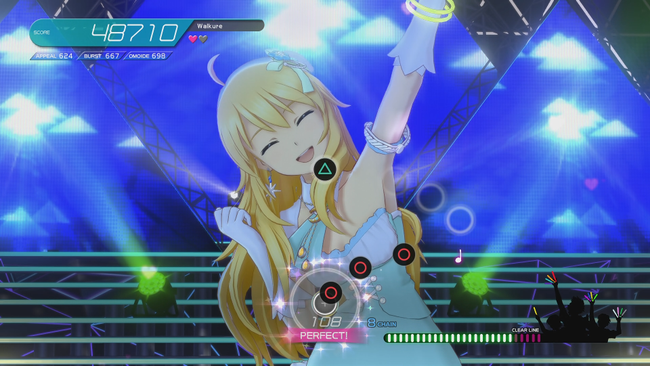
When I start thinking about the logistical achievement the series has achieved, I am astonished. Each of the thirteen idols’ voice actresses have unique sound mixes to every song in the game (plus DLC!) to accommodate their parts of a track to work in harmony with any setup imaginable. What parts of a song they sing depend on their placement in a given unit that has to work in tandem with the placements of the other voices.
The amount of stage effects triggered at key parts of a song in correlation with the distinctive dance choreography adds a lot to the spectacle of performances. However, I was not a big fan of the decision to add an after-image effects to exaggerated arm motions in the dance routes. On the other hand, it is definitely an exciting experience whenever the special scenes of all thirteen girls performing appear.
If there is one thing Platinum Stars had to absolutely nail, it was sound design and it executes it very well.
That concludes KirinP’s journey inside this world of idols down this winding Branching Path. I am not necessarily convinced I enjoy the overall pace of The Idolm@ster: Platinum Stars, but I am glad I gave it a fair shot. Sure, it may be an oddity in many ways through the lens of western culture, but I honestly love being able to play through these different experiences that challenge my own beliefs and expectations.
